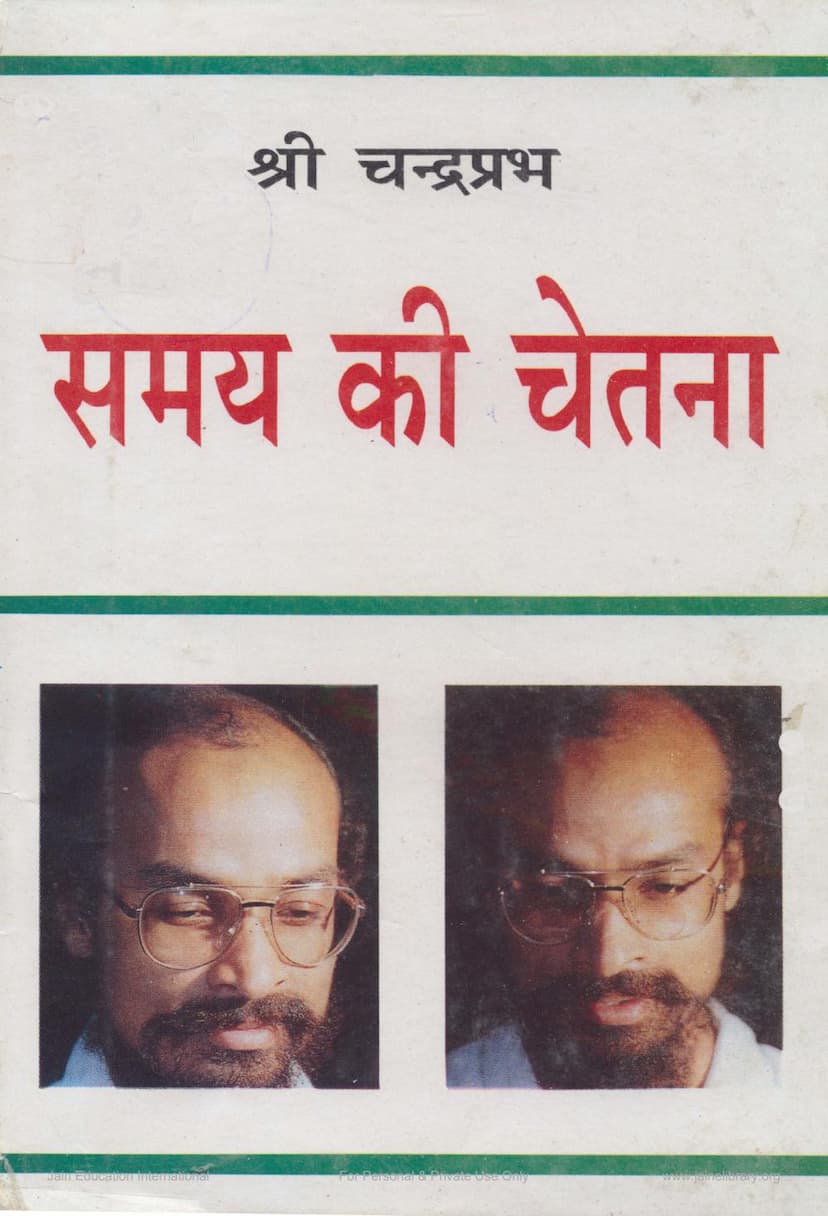Samay Ki Chetna
Added to library: September 2, 2025

Summary
This is a comprehensive summary of the Jain text "Samay ki Chetna" (The Consciousness of Time) by Acharya Chandrprabhsagar, published by Shri Jityasha Foundation. The book focuses on the profound understanding and utilization of time, a concept deeply intertwined with spiritual growth in Jain philosophy.
The book emphasizes that time is a precious, non-renewable resource that waits for no one. The author highlights the importance of understanding and valuing each moment, as every passing moment offers new lessons and opportunities for life transformation. Those who grasp the essence of time and utilize it wisely can shape their lives for the better.
Key Themes and Concepts:
- Time as the Essence of Life and Consciousness: Acharya Chandrprabhsagar equates time with the soul (atma) and principles. While time may be the orchestrator of creation, sustenance, and change, it is ultimately considered a witness. The discourses in the book are an invitation to a "self-celebration" through mindful living and timely action.
- Life as a Quest: The book posits that life is fundamentally a quest, whether one calls it life, the Great Life, truth, the soul, or the Supreme Being. Every activity, from sleeping to waking, involves a constant search. This inherent drive for discovery is what keeps life vibrant; the cessation of this quest leads to a state of being like a "walking corpse."
- Distinction Between Dharma and Adhyatma:
- Dharma (Religion): Is characterized by continuous action, rituals, and adherence to external practices. It is about "doing."
- Adhyatma (Spirituality): Is about continuous seeking, introspection, and understanding the inner self. It is about "searching." The book stresses that while religious rituals have their place, the emergence of spirituality is a great fortune.
- The Illusion of Destination: The text critiques the human tendency to view milestones as destinations, only to find that the true destination remains elusive. We often ask for directions to a place we are already standing in, symbolizing our inability to recognize the present moment or the true goal. External pursuits like wealth accumulation, without inner enrichment, are deemed incomplete.
- The Erosion of Truth and the Rise of Deception: The book laments the pervasive dishonesty in modern society, where even reflections in mirrors are distorted. The author draws a parallel between human deceit and the falsity of once-trusted analogies, suggesting that truth has become hidden behind veils of lies.
- The Importance of Honesty and Principles: The text strongly advocates for honesty as a guiding principle, contrasting it with dishonesty, which is labeled as tyranny. It questions the pursuit of wealth through unethical means, arguing that honest sustenance, even if simple, is far superior to ill-gotten gains. Living without principles and values is considered foolish.
- The Peril of Blind Imitation (Andha-anukaran): The book warns against blindly following others, emphasizing that life is a subject of research, not mere imitation. It cautions against being led by those who lack true vision. The importance of knowing the truth for oneself before following it is highlighted.
- The Power of Self-Knowledge and Awareness: Recognizing one's own ignorance is presented as a crucial step towards spiritual awakening. True wisdom comes from understanding one's limitations and seeking knowledge from that point. The text advocates for self-enquiry and inner exploration rather than blind adherence to external teachings.
- The Journey of the Soul and the Nature of Divinity: The book explores different spiritual paths and interpretations, such as the paths of Lord Krishna, Lord Mahavir, and Lord Buddha, highlighting their unique perspectives on the soul and the divine. It stresses that true spiritual realization comes from within, through self-discovery.
- The Essence of Gurukul and True Guidance: The role of a Guru is explained not just as imparting knowledge but as igniting the inner flame of awareness and guiding disciples to their own inherent divinity. A true Guru facilitates the awakening of the inner "light" rather than merely providing external teachings.
- The Significance of Purity of Intention: Whether it's performing charity or engaging in spiritual practices, the sincerity and purity of intention are paramount. Actions performed with self-awareness and a pure heart lead to spiritual merit, while those done in ignorance or with ulterior motives may not.
- The Concept of "Samayik" and "Pratikraman": The book delves into the Jain practices of Samayik (equanimity) and Pratikraman (repentance), emphasizing their true significance lies not just in external observance but in internalized consciousness and continuous effort towards ethical conduct.
- The Nature of Reality and Illusion: The world is often depicted as a dream or an illusion. Recognizing this illusory nature of worldly attachments is key to detachment and spiritual liberation.
- The Role of Time in Life and Destiny: The text acknowledges that time influences events and destinies. While time is a powerful force, the book also stresses that with awareness and conscious effort, individuals can navigate challenging times and make the most of favorable ones.
- The Call to Action: "Jaago, Aur Jiyo" (Awaken, and Live): The overarching message is to awaken from ignorance and lethargy, to live consciously, and to embrace life's journey with purpose and awareness.
In essence, "Samay ki Chetna" is a profound spiritual discourse that guides readers to understand the ephemeral yet invaluable nature of time, urging them to live a life of consciousness, self-awareness, and purpose, ultimately leading to spiritual fulfillment and liberation.